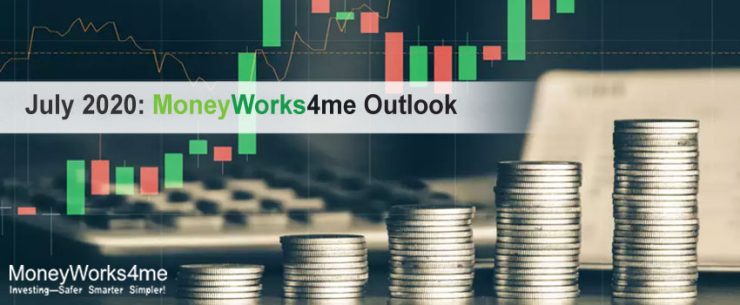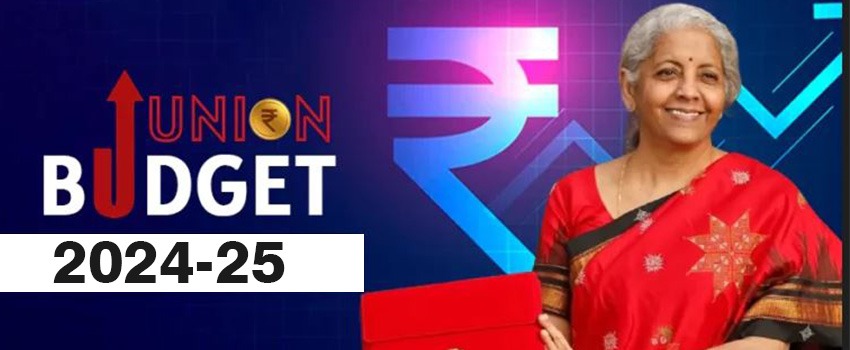This article covers the following:
Review
On Jul 31, Nifty closed at 11,073, flat from its level 1 year ago. In the last 3 years, Nifty is up 10% translating into ~3.2% CAGR.
Nifty has bounced back 49% from its lows with healthy participation across the board. The announcement of Fiscal stimulus by the US government and quantitative easing from the central bank across the world may have caused a break on selling pressure inequities. Offlate, the increased activity of retail investors in mid and small cap space also led to a recovery in small and mid-cap indices.
FII purchased Rs. 7,563 Cr worth of shares in July’20 versus purchases of Rs. 21,800 Cr in June’20. Equity fund schemes saw a net outflow of Rs 2,480 cr in July versus a net inflow of Rs 240 cr in June, the first sell-off since March 2016.
IIP number for the month of June was down 16% versus 57% in April and 34% in May. Manufacturing has recovered significantly while mining and electricity are still struggling. GDP may have contracted in 20-25% range for June’20 quarter. US GDP contracted by 33% in the Apr-Jun’20 quarter.
Outlook
As on date, the average upside of our coverage universe is likely to be more than 11.5% CAGR over the next 3 years based on current estimates.
We find that the Nifty 50 index trades above its fair value while there are pockets of extreme overvaluation and undervaluation. A lot of liquidity has pushed the market higher from low which has led to hope of revival in the economy. Beaten down stocks have rallied however, the economic indicators do not point to V-shaped recovery as of now.
While many stocks have rallied from their lows, these stocks are vulnerable for falling back as they are unlikely to have growth in near to medium term.
Just a handful of companies will be delivering earning growth due to existing slowdown and further lockdown to contain Covid-19 spread. Companies in sectors like chemicals, pharmaceuticals, IT, and Agro Chemicals will report growth in this year. Some stocks are trading close to fair price or slightly undervalued.
Though Nifty was flat last 1 year, above stocks in large and mid-caps have rallied much in excess of 50% backed by strong earnings growth. There will be always opportunities even if headline indices do not reflect much. We had seven stocks out of the above.
We are looking at companies that have good earning triggers over the next 2 years as we are not certain whether broad-based recovery will happen immediately. We are investing in companies i) coming out of sector consolidation/debt reduction, or ii) introducing new products, or iii) commissioning new capacities or iv) executing orders in hand. This gives certainty of growth rather than plain anticipation.
We would avoid bargain hunting in sectors or stocks that may have become cheap but they have high debt or they operate in cyclical sectors. There is a good reason to believe that until demand recovers, the discretionary (usually cyclical) won’t come back.
We won’t recommend to participate aggressively in the current market environment although many companies are flying just like they would in a bull market.
We have not aggressively added new ideas due to uncertainty about how the businesses shape up in the next few quarters.
We are looking for more opportunities in exports like Chemicals, Pharma, Textile, or Light Engineering with more opportunities opening up for Indian companies as the client wants to diversify from China. Even if the recent returns look high, they have a long runway from increasing market share globally. We will cautiously pick stocks that show actual data proving our hypothesis rather than buying any stock as a theme.
Risks
Indian Economy
Indian economy will be impacted by an extended lockdown as many labor-intensive sectors are not operational. There is a risk of blue-collar job losses and salary cuts.
We find that lot of sectors in India were running at lower utilization. The recent dip in demand is coming back strong as the economy reopens due to pent up demand. But sustainability looks dim.
We are tracking i) GST collections per month (starting August) ii) Auto Sales (Retail) iii) Cement offtake. Other indicators may or may not indicate actual recovery as they might be too concentrated on one segment or they might be lagging indicators.
While every sector operates in the same economy, the effects of Covid-19 would affect them differently depending on the change in consumer behaviour.
For example, some people expect people to reduce visiting cinemas as they may have gotten used to OTT content. Auto sales will grow faster as personal transport will be preferred over public transport for a commute. International travel might be lower for the first 2 years due to fear of getting contracted with viruses. Focus on Health & Hygiene may alter eating habits like eating less outside food, lowering the intake of processed food.
Beyond a point forecasting, macroeconomics is tough. We remain optimistic that the pandemic will affect only near term economic parameters but it won’t dampen demographics of the country nor can it stop the long term momentum in GDP growth and rising consumerism.
Is the right time to buy small caps/Funds?
Short answer, no. As an aggregate, small caps are more vulnerable than large caps till the time economy recovers. We believe that small caps as a group will be risky and can surprise negatively if liquidity gets sucked out. However, one can selectively buy stocks that have growth coming through. There are many small caps in IT, Pharma, Chemicals, and others that have healthy growth and also trade cheaper than many large cap stocks. We have included them in Booster plans.
What shall be the plan of action for future cash deployment, add or wait for a correction?
There two possible outcomes for the market. We believe that the market at the index level doesn’t have legs to keep rising from current levels. Either there will be similar correction like early 2020 or there could be a rangebound market correcting 15% every 6 months such that overall next 2 years level of Nifty levels are the same. It has happened in the past the market recovered after correction but stayed flat over 2-3 years on index levels (Check periods between 94-99 and 2010-14) while there was activity in individual companies.
The best action is to focus on individual companies with good prospects and keep buying them on every small correction.
In every market cycle, the type of stocks that perform well keep changing. Consumer stocks and financials had a good run in the last decade, this may change in the future where pharma and engineering sectors can perform well as they have got a tailwind from global manufacturing looking for new avenues for sourcing.
For the mutual funds portion, one can go with SIP with a diversified process of investing. Quality and growth funds can lose in performance to value and growth at a reasonable price because of valuation differential and because growth is happening in the non-traditional sector (Chemicals was never looked at as growth sector). We have seen this happening already if you observe last year’s gainers. Most fund managers chose to miss a few sectors as those sectors do not feature in the index.
Stocks have rallied, what if they correct after we buy them?
Going forward, it may appear that stocks have become expensive in comparison to March lows, so do not get anchored to March Lows. Many stocks are still cheap and trade at 12-15x FY22 P/E ratio.
We are buying cautiously as our favourite stocks have run up slightly ahead of our fair values. On top of that, please don’t become selective from your side, or else you will miss a chance to make reasonable returns. Invest some amount rather than keeping away. We saw this investor behaviour who didn’t add more to stocks in BUY Zone during March-April’20. We believe there will never be low prices without anything terrible happening somewhere in the world.
If you are afraid about the economy, people losing jobs, your own finances, commit lower than usual in equity. Say instead of Rs. 100 in equity in good times, commit 60 or 70 or even 50 is fine. But after doing this, do not wait for bottom prices or get scared of volatility because there is always a risk of missing out 13-15% CAGR returns right on our platter.
We are managing only long term money and predicting near term events is futile. We do not find any merit in second-guessing what’s going to happen in the next 6 months-1 year. If the shortlisted stocks are good companies, with good growth prospects, they will bounce back as soon as the selling stops. This clearly shows picking right stocks must be easier than predicting the market.
We continue to recommend Gold Fund/Gold (up to 5-10% of the portfolio) as a hedge from contagion risks and allocation to safe liquid funds/Fixed Deposits (10-20%) within in equity portfolio for capturing new opportunities.
Act on our calls and restrict your allocation to 3-5% in each stock. And not more than 25% in each mutual fund. This will keep you at peace, and not significantly dent your portfolio performance.
Beyond this, tinkering asset allocation will only reduce long term returns thereby missing one’s target corpus. We have diversified our stocks portfolio, we have diversified assets and we have long term horizon. Together this takes care of all potential risks in investing.
Happy Investing!
MoneyWorks4me Outlook:
If you liked what you read and would like to put it in to practice Register at MoneyWorks4me.com. You will get amazing FREE features that will enable you to invest in Stocks and Mutual Funds the right way.
Need help on Investing? And more….Puchho Befikar
Kyunki yeh paise ka mamala hai
Start Chat | Request a Callback | Call 020 6725 8333 | WhatsApp 8055769463















